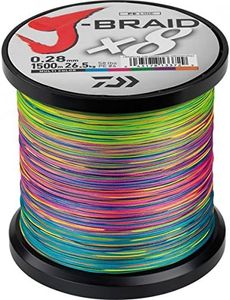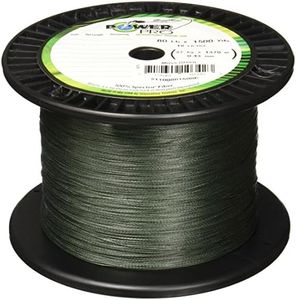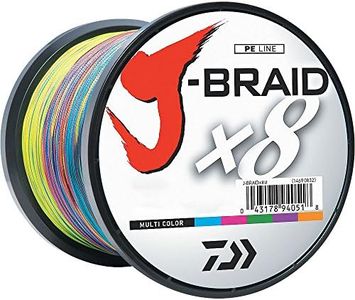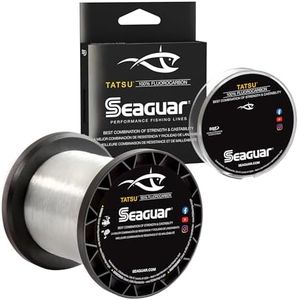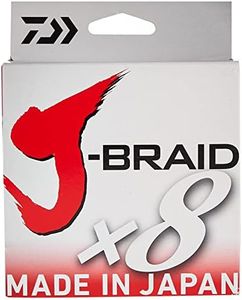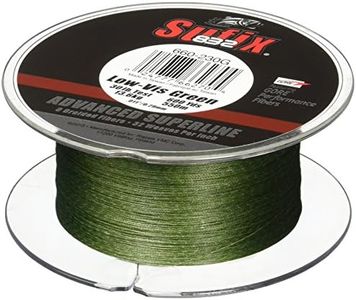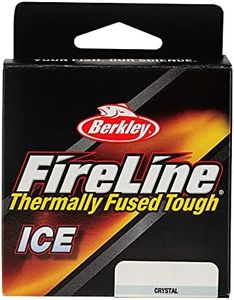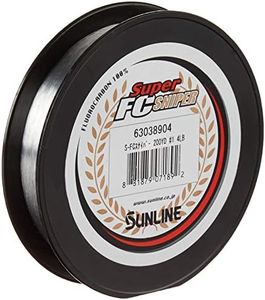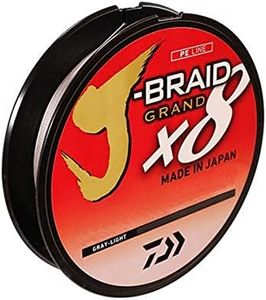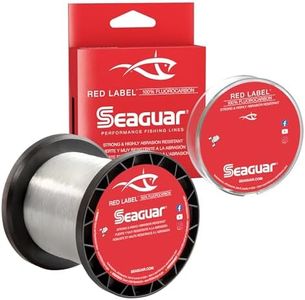We Use CookiesWe use cookies to enhance the security, performance,
functionality and for analytical and promotional activities. By continuing to browse this site you
are agreeing to our privacy policy
10 Best Baitcaster Fishing Line
From leading brands and best sellers available on the web.Buying Guide for the Best Baitcaster Fishing Line
Choosing the right fishing line for a baitcaster reel is essential for successful and enjoyable fishing. The line connects you to the fish, so its characteristics can impact everything from casting distance to sensitivity and strength. It's important to consider what kind of fish you'll target, where you'll be fishing, and your experience level. Pay attention to the specifications, as they will help you pick a line that matches your fishing conditions and technique.Line MaterialThe material of a fishing line affects its strength, stretch, visibility, and handling. The common types are monofilament, fluorocarbon, and braided lines. Monofilament is stretchy, easy to handle, and good for beginners or versatile use. Fluorocarbon sinks faster and is less visible in water, ideal for clear waters or when fish are skittish. Braided lines are very strong for their thickness and have little stretch, making them a favorite for heavy cover and big fish. When picking a material, consider the clarity of the water, type of cover, and fish species. If you're a beginner or want a jack-of-all-trades option, monofilament is reliable. For sensitivity or tough environments, braided or fluorocarbon may be better.
Pound Test (Strength)Pound test refers to how much weight the line can handle before breaking. It's a crucial spec because it matches your line to the size of fish you plan to catch and the kind of lures you'll be using. Lighter lines (8-12 lb) work well for small to medium fish in open water, while heavier lines (15-30 lb or more) are best for big fish or when fishing in weedy or snag-prone areas. Think about the biggest fish you might hook and the environment you'll fish in, and choose a line that can handle the challenge without being so heavy it ruins your casting distance or lure action.
Line DiameterLine diameter is how thick the line is. Thinner lines cast further and make lures move more naturally, but they have less strength compared to thicker lines of the same material. Braided lines are popular because they provide more strength at a smaller diameter. When you want longer casts or need to fill more line on your reel, a thinner line helps. If you’re targeting bigger fish or fishing in dense cover, a thicker line can be an advantage. Always balance diameter with strength and the reel’s line capacity.
Line StretchLine stretch determines how much the line can give when pulled. Monofilament lines stretch the most, which helps absorb the shock of a fish’s fight, reducing the chance of breakage, but can dampen sensitivity. Fluorocarbon stretches less, and braid stretches the least, offering better sensitivity for quick hook sets. If you like feeling subtle bites or need to react fast, look for low-stretch lines. If you need to prevent snapping during sudden fish runs, a bit of stretch can be helpful.
Abrasion ResistanceAbrasion resistance is how well the line stands up to scrapes against rocks, logs, or other rough objects underwater. Fluorocarbon and braided lines tend to be more resistant than basic monofilament. If you fish in places with lots of structure, or for species that run through heavy cover, abrasion resistance is important to prevent break-offs. For open, obstacle-free water, this spec matters less.
VisibilityLine visibility means how easily fish can see your line underwater, which can influence their willingness to bite. Fluorocarbon is nearly invisible in water, making it great for clear streams or pressured fish. Monofilament and braid are more visible, though braid comes in colors that can help you watch line movement. In clear conditions, less visible lines are an asset. In stained or murky water, fish are less cautious, so visibility is less of a concern.


